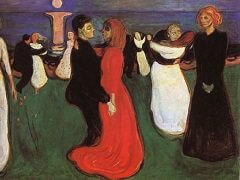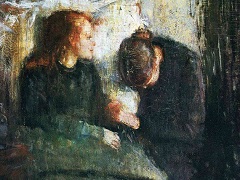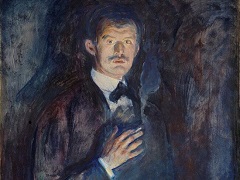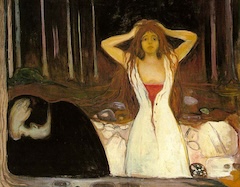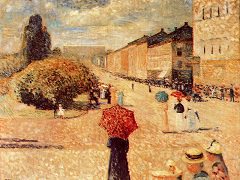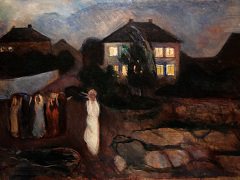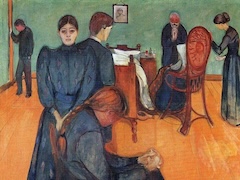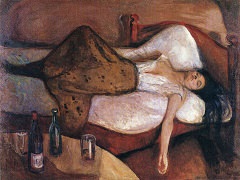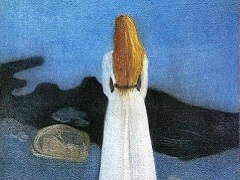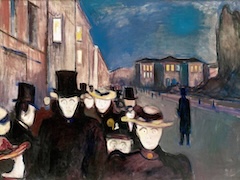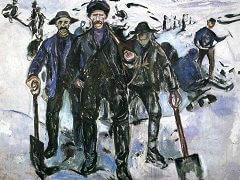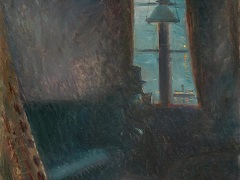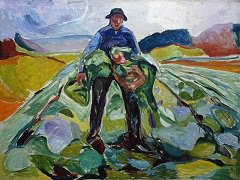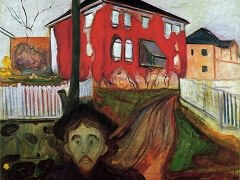The Scream, 1893 by Edvard Munch
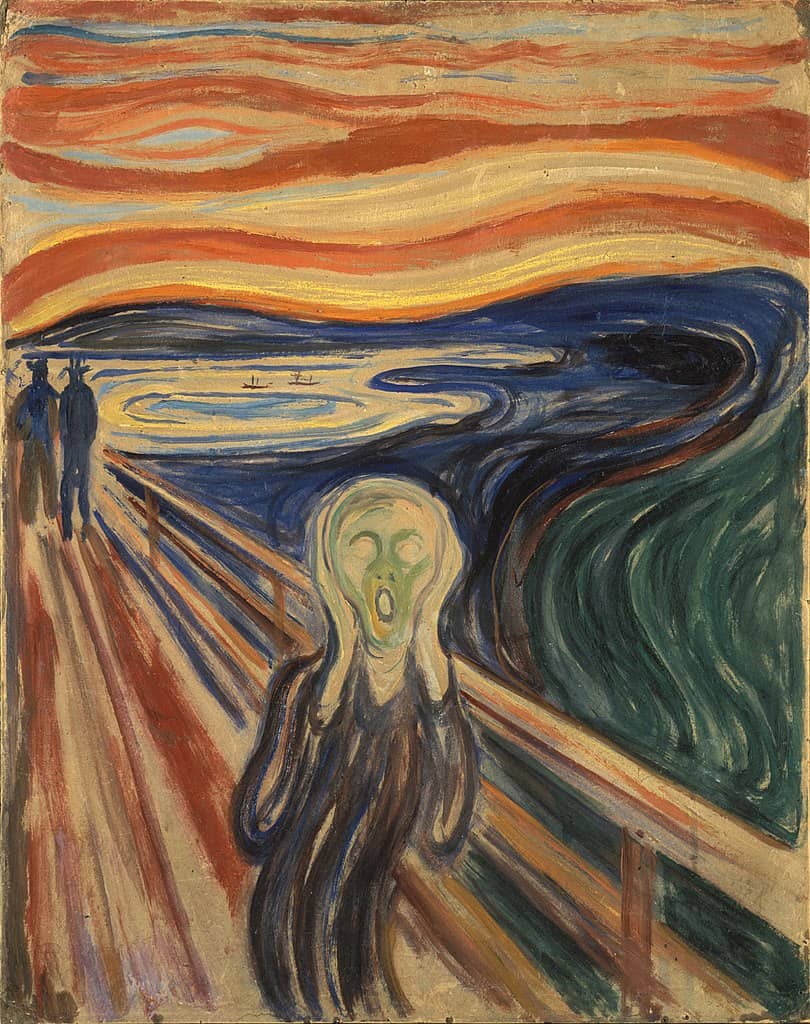
Munch's The Scream is an icon of modern art, the Mona Lisa for our time. As Leonardo da Vinci evoked a Renaissance ideal of serenity and self-control, Munch defined how we see our own age - wracked with anxiety and uncertainty.
Essentially The Scream is autobiographical, an expressionistic construction based on Munch's actual experience of a scream piercing through nature while on a walk, after his two companions, seen in the background, had left him. Fitting the fact that the sound must have been heard at a time when his mind was in an abnormal state, Munch renders it in a style which if pushed to extremes can destroy human integrity. As previously noted, the flowing curves of art nouveau represent a subjective linear fusion imposed upon nature, whereby the multiplicity of particulars is unified into a totality of organic suggestion with feminine overtones. But man is part of nature, and absorption into such a totality liquidates the individual. Beginning at this time Munch included art nouveau elements in many pictures but usually only in a limited or modified way. Here, however, in depicting his own morbid experience, he has let go, and allowed the foreground figure to become distorted by the subjectivized flow of nature; the scream could be interpreted as expressing the agony of the obliteration of human personality by this unifying force. Significantly, although it was Munch himself who underwent the experience depicted, the protagonist bears no resemblance to him or anyone else. The creature in the foreground has been depersonalized and crushed into sexlessness or, if anything, stamped with a trace of the femininity of the world that has come close to assimilating it.
Several facts indicate Munch was aware of the danger of art of this sort for a neurotic humanist like himself. He soon abandoned the style and rarely if ever again subjected a foreground figure to this kind of radical and systematic distortion. At the top of another version of the subject (National Gallery, Oslo) he wrote: 'Can only have been painted by a madman.' He certainly had a horror of insanity, which had afflicted his sister Laura. Within the picture, he has set up a defense, in the form of the plunging perspective of the roadway and its fence, which preserves a rational world of three dimensions, holding at bay the swell of art nouveau curves. Safe in this rational world, the two men in the distance remain unequivocally masculine. In the foreground unified nature has come close to crossing the fence, close enough to distort the form and personality of the protagonist. But the fence still protects it from total absorption into subjective madness.
The Scream has been the target of several high-profile art thefts. In 1994, the version in the National Gallery was stolen. It was recovered several months later.
The 1895 pastel-on-board version of the painting was sold at Sotheby's for a record US$120 million at auction on 2 May 2012. The previous record for the most expensive work of art sold at auction had been held by Nude, Green Leaves and Bust by Picasso, which went for US$106.5 million at Christie's two years prior on 4 May 2010. When accounting for inflation, the highest price paid for art at an auction is still held by Portrait of Dr. Gachet by Vincent van Gogh, which sold for $82.5 million in 1990, or about $151 million 2012 dollars. There have been reports that The Card Players, by Paul Cezanne, sold privately for $250m in 2011.



